Monday 1st October 2018: We leave Canberra and start to head West today going to Wagga Wagga. Firstly we take Ronda Williamson's advice, she has commented on Pam's Floriade blog that Tulip Top Gardens is better than Floriade and it is only 13 km out of our way so we do that. It was established in 1997 by Pat and Bill Rhodin on 10 acres in the valley. Pat & Bill with their son are the only gardeners and their daughter does the administration and marketing. Over half a million bulbs and flowers are planted each year amongst the 1000 blossom trees - the trees are spectacular, particularly the ones that are multi grafted so they have both white and pink blossom on the one tree. Put tulips and pansies amongst this plus the weeping willows and we certainly agree with Ronda that is much better than Floriade and its 'Pop Culture' theme that it had this year.
Back past EPIC (the caravan park) and onto the Barton Highway, not long before we are out of ACT and back into NSW, going past Murrumbateman - they must have had an extra shower of rain here but it is an isolated spot and we are soon back to just a tinge. Onto the Hume Highway we go to Gundagai to see 'The Dog Sits on the Tuckerbox' - it is actually 5 miles from Gundagai as the song says - erected in 1932, the dog is quite small, but that song must have put it on the map as there were heaps of people today - school holidays and a holiday in NSW, so very busy with a few stalls, a permanent food outlet that has every knick knack you could imagine.
It is very hilly but not mountainous, we see the road off to Tumut and the snow - we leave the Hume and turn onto the Sturt Highway which takes us to Wagga Wagga - we cross the Murrumbidgee River on our way in and this does surround a lot of the town.
Tuesday 2nd October 2018: We have decided to have a bit of down time here and stay an extra day as it is meant to be wet tomorrow, so it is washing and shopping today and a walk down around the Murrumbidgee River.
Wagga Wagga is a major regional city with a population of 54,000 in the 2016 census and is built on the banks of the Murrumbidgee River which is a major river coming out of the snowy mountains and feeding into the Murray River. Charles Sturt was the first explorer here in 1829 and he determined the course of the Murrumbidgee River. In 1849 it became a town and in 1946 a city. During WW11 it became a garrison town with the establishment of a military base at Kapooka and RAAF bases at Forest Hill and Uranquinty. The city is equidistant from Sydney and Melbourne - 452 & 456 km's - about the same distance as we are from Perth, but they have a choice of two cities. They lay claim to some famous cricketers as well: Mark Taylor, Michael Slater and Geoff Lawson.
We go for a drive to the Victory Memorial Gardens to locate a life-sized copper sculpture of the Jolly Swagman boiling his billy - we do find him, but he is disappointing, however the rest of the Gardens are fantastic, green lawns, leafy trees, sunken garden the war memorial with the eternal flame burning and lots more all on the banks of the Murrumbidgee. The one story I will tell from this visit is
about the rose we call Peace. It was developed by Frances Meilland in France just before the outbreak of WW11. It was originally called MME.A. Meillard. Bud wood from the rose was smuggled out of Nazi occupied France on the last clipper to America, where it was produced in numbers to be generally released at the end of the war as the "Peace Rose". At the first session of the United Nations, each delegate was given a Peace Rose Bloom, a fitting symbol for the hope of world peace.
The walkway under the road bridge is the home of the 2008 Mural Project which is a tribute to famous Wagga Wagga people, all with links to the city's heritage in caricature form. The ones we knew were: the cricketers, Mark Taylor, Michael Slater, Dame Edna Everidge, a couple of Olympians, Dame Mary Gilmore and Paul Kelly (AFL Sydney Swans captain and a Brownlow Medalist). This walkway leads to the Wollundry Lagoon which is important to the Aboriginal people for its spiritual, and social values. The amphitheatre and Open Space areas provide a great area for a variety of outdoor events.
The Murrumbidgee River rises just north of Kiandra in NSW, flows through the ACT and enters the Murray River after being joined by the Lachlan River, a distance of 1600km. Major dams provide water for hydro electricity and recreational pursuits, water supplies and most importantly irrigation schemes in the dry west of the state. In Wagga Wagga it is their beach as white sand is deposited around the curve of the river with lawn banks, picnic settings and cabins and caravans nearby.
Wednesday 3rd October 2018: Received a phone call from the next door van this morning, Peter was locked in his van, could John come and get a key through the window and open from the outside - that didn't work, so jimmied from the inside - to cut a long story short, a new part from town along with a man to fix it and all is good again. The good rains that were forecast became less and less as they do in a drought and it is what you would say, it's just dripping, but should keep that tinge of green happy for a couple more weeks.
After an early lunch we go out to the RAAF Wagga Heritage Centre, which showcases Air Force history and is 10 km out of Wagga in the suburb of Forest Hill and is in front of the RAAF air base. The base commenced in 1940 and is now the Air Forces main basic recruitment training school in technical, administration and logistics trades. In addition, Air Force, Army and Navy personnel undertake airworthiness training here. Currently on display next to the centre is a Mirage, a Korean War Meteor, a Vietnam War Canberra and an F-111, representing 60 years of RAAF flying history.
In 1942 the 31 Squadron trained at Wagga Wagga to fly the Beaufighter which became known by the Japanese as the 'Whispering Death' when they flew out of Darwin and had the Japanese retreating.
This WRAAF uniform was worn by a lady is still living here in Wagga and she and her husband both volunteer at the RAFF Wagga Heritage Centre and apparently the uniform still fits her and in summer is changed to her summer uniform. After 1977 they became one identity with the same ranks and currently there is a push to get more women into the services - you can train to be anything in the services.
At the Museum of the Riverina we see a display on the Realism of War by George Gittoes showing the effects and changing attitudes towards war. We check out the Railway Station, a lovely building - it has 4 trains per day passing through, 2 coming from Melbourne, going to Sydney and 2 going the opposite way.
Dinner in the camp kitchen and there is a thunder storm and down it comes on the tin roof - about 10 mils, a nice addition to the drizzle of today.

 Wagga Wagga, New South Wales, Australia
Wagga Wagga, New South Wales, Australia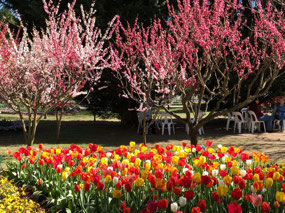


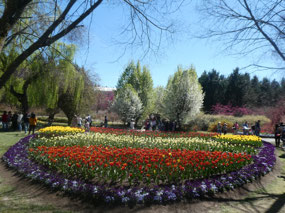
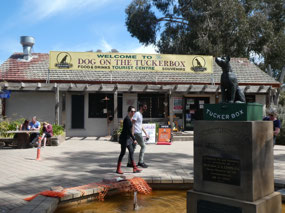
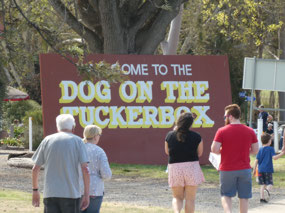




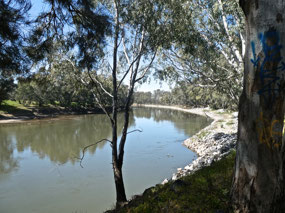
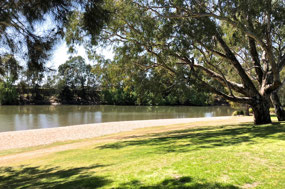
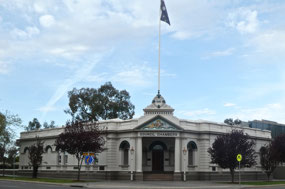
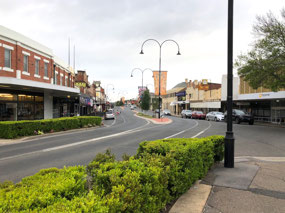
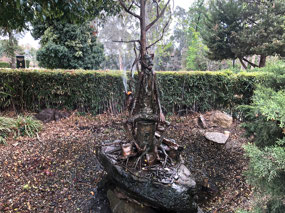




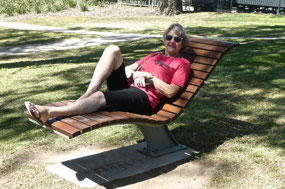
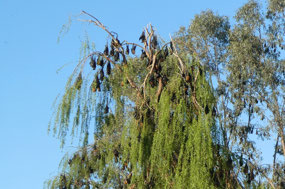


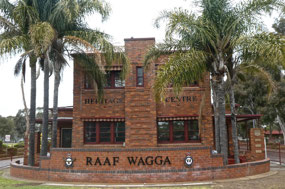
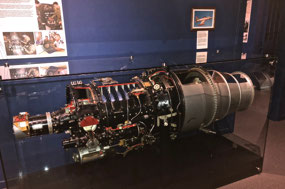


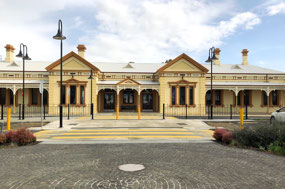




Maureen
2018-10-03
What beautiful gardens that you have seen. We start pennants today the waether looks a bit sus hopefully the rain holds off until this afternoon. Sounds a bit like you have turned the corner to come home bye for now